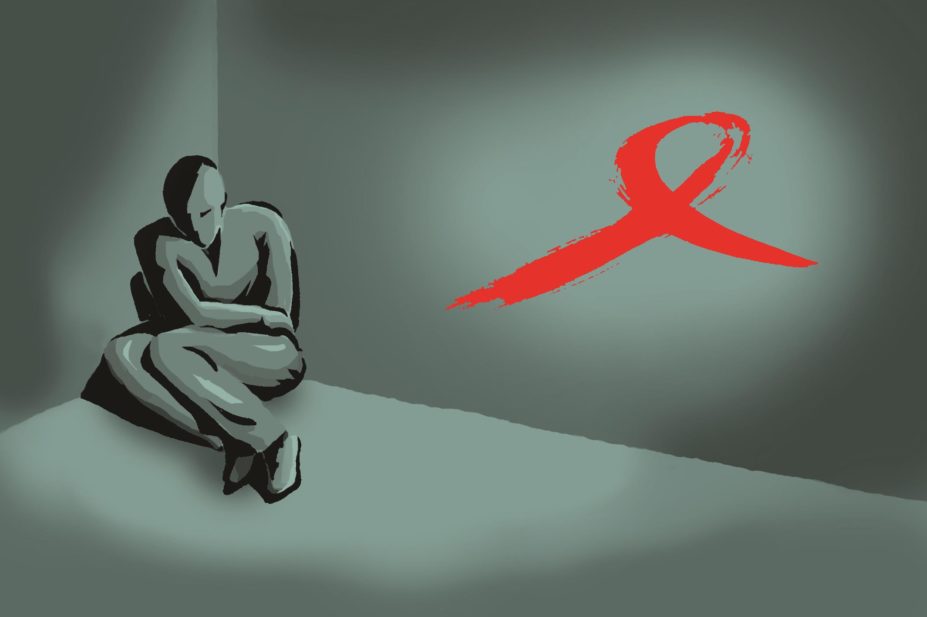
Callie Jones
The progress made in the treatment of HIV infection in recent years cannot be overstated. What was once a death sentence is now treatable. A HIV patient beginning treatment today can hope to have to a normal life expectancy, albeit one dependent on continuous medical treatment. Those with undetectable viral loads have almost no chance of transmitting infection, nor does infection prevent people going on to have children.
You would find it hard to believe therefore that this month the headline ‘Hollywood HIV panic’ ran in the UK’s biggest circulation tabloid The Sun in reference to an actor being diagnosed with HIV. Charlie Sheen announced soon after that he has been living with HIV for the past four years. The worst part about the illness, said Sheen, is the shame that comes with it. People do not take action or get help because of the stigma, he added.
In the West, you could have been forgiven for thinking we had grown to accept people living with HIV. Many individuals who have challenged the early misconceptions about HIV/AIDS and many more people who have learnt to embrace their status and campaign for greater public acceptance have done much to reduce the stigma of disease and educate the public about HIV infection.
Yet stigmatisation of people living with HIV remains a major problem worldwide. The World Health Organization (WHO) cites fear of stigma and discrimination as the main reason why people are reluctant to get tested, disclose their HIV status and take antiretroviral drugs.
Some national governments still deny the existence of HIV, dismissing it as a disease of the West confined to those who are sexually deviant. It is in these countries where those living with the virus will continue to die unnecessarily.
Stigma creates a culture of fear, and this fear could lead to people refusing to get tested, begin treatment and stop the virus from spreading further.
Nonetheless, in the past few years great progress has been made in the battle against the HIV epidemic. Previously, diagnosing HIV infection was cumbersome and slow. The standard medical practice was to hold off initiating treatment until a patient’s CD4 cell count dropped to a level where they were at higher risk of developing AIDS. Much attention is now directed at identifying those at risk and swiftly diagnosing those infected with the virus, and there is growing evidence that those diagnosed should be started on treatment as soon as possible. For example, the START trial, carried out in 35 countries, was stopped over a year early after interim results showed that the health benefits of starting antiretroviral drugs immediately, regardless of CD4 cell counts, outweighed the potential risk to health. The WHO recommends that anyone infected with HIV should begin antiretroviral treatment as soon as possible after diagnosis.
The use of treatment as prevention (TasP) — a HIV prevention method that uses antiretroviral treatment (ART) to decrease the risk of HIV transmission — continues to grow. In 2011, the landmark study HPTN 052 showed early initiation of antiretroviral (ARV) treatment in those with a CD4+ cell count between 350 and 550 for the HIV-infected partner in a serodiscordant couple reduced HIV transmission to the HIV-negative partner by 96%.
Moreover, this year the WHO recommended that pre-exposure prophylaxis (PreP) — giving ARVs to protect people from HIV before potential exposure — should be offered to all those who are at substantial risk of HIV infection (previously, it was recommended that only certain affected populations, such as sex workers, men who have sex with men (MSM) and people who inject drugs, received PreP).
Earlier in 2015, the world exceeded the AIDS targets of Millennium Development Goal 6 — halting and reversing the spread of HIV, with new HIV infections falling by 35% and AIDS-related deaths decreasing by 41%.
Meanwhile, new ARTs continue to enter the market and new formulations are being researched.
All of these indicate that the fight against HIV and AIDS is heading in the right direction in terms of drug treatment and research. However, if further progress is to be made, this will depend on identifying everyone who has the virus, which continues to be a challenge — and stigma plays a large part in this.
So although we have come a long way, there is still more to do, particularly in terms of educating people and changing their attitudes towards HIV, if we are to ever see the last of this virus.


